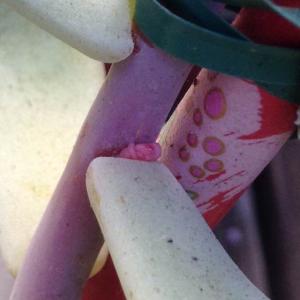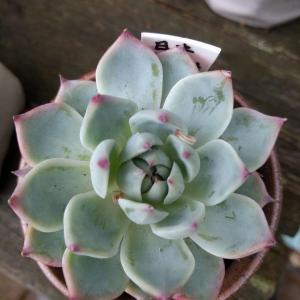文章
Miss Chen
2018年05月14日

Grow fresh vegetables all year in Phoenix. The hot summer sun is a good thing for the right vegetables. Thoughtful garden design protects plants from too much sun. Irrigation and shade are key ingredients to enjoying the fruits and vegetables of your labor through summer's heat.

Irrigation
Irrigating vegetables is a balance of the right amount of water at the right time of day. Thorough watering early in the day provides a reservoir from which plants can draw through the heat of the day. Drip or soaker irrigation is preferred, because water droplets on vegetables or leaves turn into magnifying glasses concentrating sunlight and burning the plant. Overnight watering contributes to molds and soil-transmitted disease. Missing one day's irrigation can kill plants in the summer.
Shade
Peppers, corn, most tomatoes and melons thrive in the heat and sun all day long. Most herbs, basil is an exception, need shade from direct sunlight. Other vegetable plants, such as leeks and eggplant, also need protection from direct afternoon sun. Shade cloths, readily available in the Phoenix area, are easily installed over sensitive plants.
Monsoon
Protect plants from violent summer monsoons and their wind, hail and heavy rain by using poles, stakes or tomato cages to keep plants from breaking during the pummeling. Ensure shade cloth is well anchored and has wind flaps to reduce the chance of it sailing away in the storm.
Dust
Dust on leaves interferes with transpiration. Gently wash dust off leaves with a light spray late in the afternoon or early in the evening. Carefully apply water to leaves and avoid saturating below the soil surface.
Mulch
Mulch benefits the Phoenix vegetable garden by helping retain water and preventing weeds. Chunky mulch, such as a bark, allows airflow at ground level, depressing soil temperature and protecting roots.

Container Gardens
Direct sun turns containers into ovens, baking vegetable roots. Any plant in a container needs to be shaded, beginning at midmorning. Irrigate containers twice a day to maintain a cool soil temperature. Potted soil is less susceptible to disease allowing for the twice-a-day watering.

Irrigation
Irrigating vegetables is a balance of the right amount of water at the right time of day. Thorough watering early in the day provides a reservoir from which plants can draw through the heat of the day. Drip or soaker irrigation is preferred, because water droplets on vegetables or leaves turn into magnifying glasses concentrating sunlight and burning the plant. Overnight watering contributes to molds and soil-transmitted disease. Missing one day's irrigation can kill plants in the summer.
Shade
Peppers, corn, most tomatoes and melons thrive in the heat and sun all day long. Most herbs, basil is an exception, need shade from direct sunlight. Other vegetable plants, such as leeks and eggplant, also need protection from direct afternoon sun. Shade cloths, readily available in the Phoenix area, are easily installed over sensitive plants.
Monsoon
Protect plants from violent summer monsoons and their wind, hail and heavy rain by using poles, stakes or tomato cages to keep plants from breaking during the pummeling. Ensure shade cloth is well anchored and has wind flaps to reduce the chance of it sailing away in the storm.
Dust
Dust on leaves interferes with transpiration. Gently wash dust off leaves with a light spray late in the afternoon or early in the evening. Carefully apply water to leaves and avoid saturating below the soil surface.
Mulch
Mulch benefits the Phoenix vegetable garden by helping retain water and preventing weeds. Chunky mulch, such as a bark, allows airflow at ground level, depressing soil temperature and protecting roots.

Container Gardens
Direct sun turns containers into ovens, baking vegetable roots. Any plant in a container needs to be shaded, beginning at midmorning. Irrigate containers twice a day to maintain a cool soil temperature. Potted soil is less susceptible to disease allowing for the twice-a-day watering.
0
0
文章
Miss Chen
2018年05月14日

You've done all the work to get them in the ground and keep them healthy as they grow. When the harvest comes in, how do you know it's the perfect time to pick your glowing yellow squash from its home in the garden? Knowing when to bring the squash inside so that you can enjoy the fruits of your labor is a matter of knowing color, firmness and length. This information can also help you pick the best vegetables at the grocery store or the farmer's market.

Peak Performance
Picking squash at its peak ensures the highest level of freshness, crispness and flavor. Yellow squash is ready to pick when it is still young and firmly attached to the vine. It should feel firm and rather heavy for its size. The skin should be a bright hue and have a healthy consistency. Soft spots or withered areas could mean you have a watering issue. If caught early, the taste and texture of the vegetable should not be diversely affected. If the stem begins to wilt, again look at your water rates and adjust. Don't pick fruit before they get to at least 4 inches in length. They can grow as large as 8 inches or more, so check the heft to know when it is ready to remove from the vine.
Growing Season
Squash should be ripe 50 to 60 days after a seedling is planted in warm spring soil. It will continue to blossom and provide vegetables throughout the summer. You may want to protect the vines with a shade cloth during the hottest parts of the season. Check the crop regularly so you don't miss out on peak picking time. This can also alert you to birds, pests or animals that have found your yield and are attempting to take some for themselves or damage your growing garden.

Tips and Tricks
Sometimes, it is hard to know when it is too late and the vegetable has gone bad. It can look fresh but taste mealy. Don't let the squash get too long or heavy as it will affect the flavor. A good rule is to harvest vegetables three to four times a week, letting the fruit ripen naturally. Unlike some other crops, such as tomatoes and avocados, squash doesn't ripen as well once it has been picked. If it droops into the dirt, you may want to prop up the ripening vegetable in order to keep it away from pest and rot. If you can't scratch the skin of the squash with your fingernail, it is overripe.

Peak Performance
Picking squash at its peak ensures the highest level of freshness, crispness and flavor. Yellow squash is ready to pick when it is still young and firmly attached to the vine. It should feel firm and rather heavy for its size. The skin should be a bright hue and have a healthy consistency. Soft spots or withered areas could mean you have a watering issue. If caught early, the taste and texture of the vegetable should not be diversely affected. If the stem begins to wilt, again look at your water rates and adjust. Don't pick fruit before they get to at least 4 inches in length. They can grow as large as 8 inches or more, so check the heft to know when it is ready to remove from the vine.
Growing Season
Squash should be ripe 50 to 60 days after a seedling is planted in warm spring soil. It will continue to blossom and provide vegetables throughout the summer. You may want to protect the vines with a shade cloth during the hottest parts of the season. Check the crop regularly so you don't miss out on peak picking time. This can also alert you to birds, pests or animals that have found your yield and are attempting to take some for themselves or damage your growing garden.

Tips and Tricks
Sometimes, it is hard to know when it is too late and the vegetable has gone bad. It can look fresh but taste mealy. Don't let the squash get too long or heavy as it will affect the flavor. A good rule is to harvest vegetables three to four times a week, letting the fruit ripen naturally. Unlike some other crops, such as tomatoes and avocados, squash doesn't ripen as well once it has been picked. If it droops into the dirt, you may want to prop up the ripening vegetable in order to keep it away from pest and rot. If you can't scratch the skin of the squash with your fingernail, it is overripe.
0
0





















